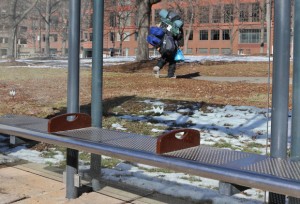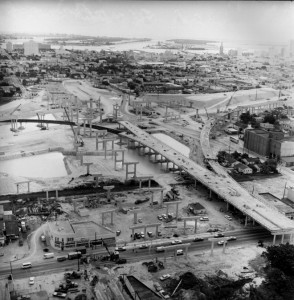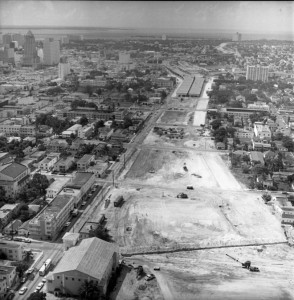In this post, I will comment on several quotes below from Sarah Schindler’s “Architectural Exclusion: Discrimination and Segregation Through Physical Design of the Built Environment”, an article that was published in The Yale Law Journal.

In 2013, The Metro transit agency of St. Louis, Missouri implemented dividers on bus stop shelters. (Source: St. Louis Post-Dispatch)
“…one might think it a simple aesthetic design decision to create a park bench that is divided into three individual seats with arm-rests separating those seats. Yet the bench may have been created this way to prevent people— often homeless people— from lying down and taking naps” (1942).
In recent years, city planners, domestic and abroad, have made decisions to deter people from sleeping on public benches. These actions displace homeless people, who find sleeping on a bench more comfortable than resting on the ground. For the subtle changes in bench design, are often overlooked by individuals who don’t utilize the seating. As these forms of modifications are finished, the affected population are often pushed out from areas where they are not wanted.
“Another common version of this phenomenon is one of the most obvious forms of architectural exclusion: the walls, gates, and guardhouses of gated communities” (1958).
The idea of “gated communities” were based on the desire for security. Its design intentionally creates a physical barrier between the residents and the outside world. Along with safekeeping their communities, the dwellers disconnect themselves from ever forming relationships with bordering neighborhoods.

An aerial view of the destruction of the Overtown community, a predominately black neighborhood of Miami, Florida. The images of the construction of I-95 and 395 were taken on August 23, 1967. (Source: The Miami Herald )
“The placement of highways so as to intentionally displace poor black neighborhoods is even more familiar. Policymakers ‘purposefully’ decided to route highways through the center of cities, often with the intent ‘to destroy low-income and especially black neighborhoods in an effort to reshape the physical and racial landscapes of the postwar American city'” (1966).
In 1956, the National Interstate and Defense Highways Act, signed by President Dwight D. Eisenhower, set to expand the interstate highway system to link all cities together. The Act adversely disturbed communities across the country for monumental road projects. During this time, cities used the construction of major roads and highways in their favor to stall the integration of public schools. Moreover, officials would cut through disadvantaged areas because the citizens lacked political influence and didn’t have a voice.

